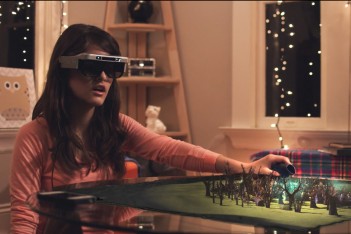We are featuring guest blogger Adam Fung, from No Fun Games, who also happens to be a game designer at Blue Goji. After attending this year's Austin Game Conference, he took to his own blog to address a keynote that he particularly enjoyed. Besides his blog, you can catch him on Facebook and Twitter. This post was originally published here.
To open the conference, John Hanke [of] Niantic, the developers of Pokemon GO and Ingress, took the stage with Chris Plante from Polygon, to discuss the current state and future of Augmented Reality. [In short,] the beginning of AR was a letdown. Augmented Reality started back about four to five years ago with marker tracking, where a person would place an object/marker in view of a camera, and a digital construct would pop out of it. Hanke asserted that this never took off because it felt gimmicky. It lacked depth and did not connect with the general consumer. What is different now with Pokemon Go and the advancements in AR?

The push from tech giants [like] Apple and Google have moved the field forward, accelerating the growth of the technology. Hanke believes the technology we see in phones, Apple’s ARkit [for example], will be featured in AR devices of the future, such as AR glasses. As game designers, it is up to us to decide how we use this technology.
Hanke argues that Pokemon GO’s success stems from how they used the medium. Using both the camera and the players geo location, it encourages players to go outside and interface with the real world, creating an experience that doesn’t otherwise exist. Players leave their homes and travel to locations for special Pokemon, items, and raids. Players share this experience with others, connecting through techniques commonly used in MMO (Massively Multiplayer Online) games. Niantic’s games even offer up massive events where millions come from all over the world to share one experience. Hanke stated that the social aspect of Pokemon GO will remain its most prominent pillar in gameplay features moving forward. Niantic intends to connect people by connecting the real world and the digital.  We are on the bleeding edge of technology, which means there will be experimentation. Developers will try to set a standard for what an AR experience is, and I believe we have a good example with Pokemon GO. Ask yourselves, how am I using my medium to best serve the game? A question you should ask yourself with any medium. The example of AR tabletop games arose during discussion. Hanke disliked it, mentioning that it doesn’t use AR to the fullest. He argued that the experience isn’t enhanced merely by existing in AR. Designers should ask themselves: How is this game better because of AR?
We are on the bleeding edge of technology, which means there will be experimentation. Developers will try to set a standard for what an AR experience is, and I believe we have a good example with Pokemon GO. Ask yourselves, how am I using my medium to best serve the game? A question you should ask yourself with any medium. The example of AR tabletop games arose during discussion. Hanke disliked it, mentioning that it doesn’t use AR to the fullest. He argued that the experience isn’t enhanced merely by existing in AR. Designers should ask themselves: How is this game better because of AR?
What makes AR special then? What should you do with it? AR is a unique interconnection between the real world and the digital. Currently at Blue Goji, we’re building a mobile game that blends the two experiences. We not only want to create relationships and interactions in the real world, that otherwise wouldn’t exist, but also add to ones that do (Unfortunately I can’t say more about my current project). A tabletop game already exists in other mediums. How can AR build on and add to the experience, whether it’s an app, game, or any product? Find ways to incorporate the real world and the people that live in it. Use AR to cultivate the human experience.
Thank you, Adam, for contributing to our blog! For any questions about this post, leave us a comment below or reach us on social media.
